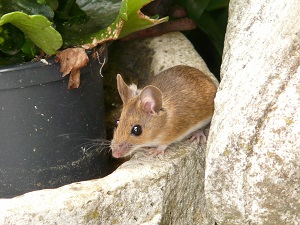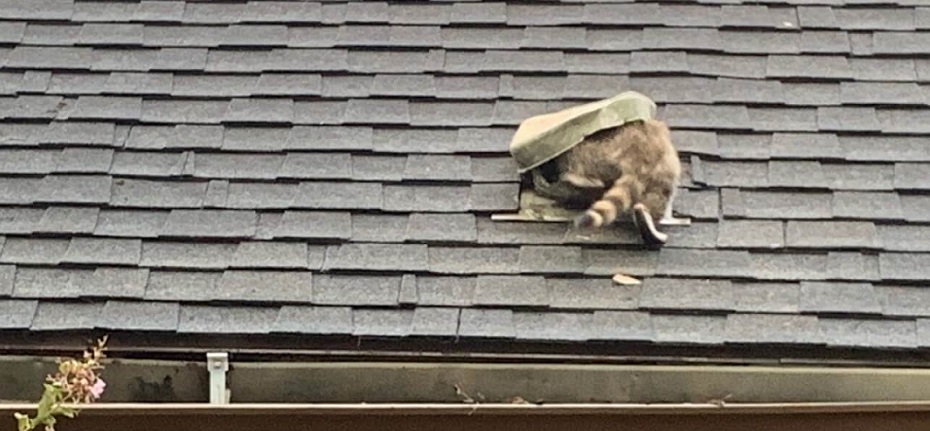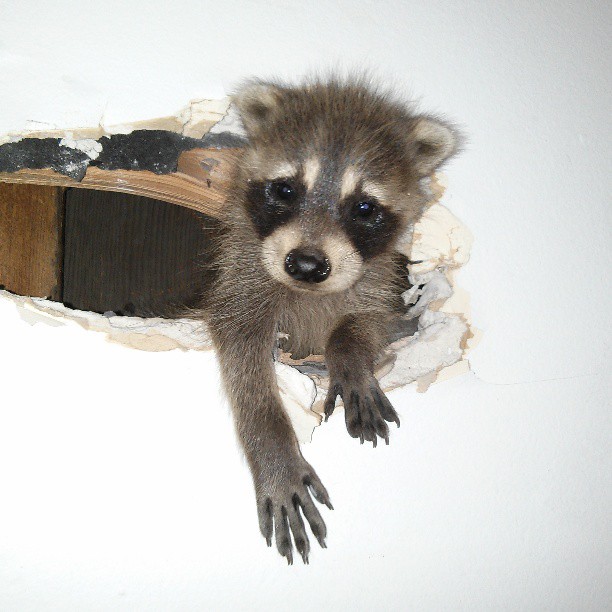The house mouse and deer mouse are common species of pest mice to find inside your home. House mice are small rodents that are found throughout Canada, particularly in urban and suburban areas. They are known for their ability to quickly reproduce and infest homes, buildings, and agricultural settings. House mice can contaminate food sources, cause property damage, and spread diseases. Deer mice are also common pests in Canada, especially in rural and wooded areas. They are known carriers of hantavirus, a disease that can be transmitted to humans through contact with mouse droppings or urine. Deer mice can also cause damage by chewing on wires, insulation, and other materials in homes and buildings.
Mice look for a place to build a nest where they can give birth to a litter of pups. Mice typically reproduce more than six times a year. To prevent infestations and damage to your property, you must be able to answer the question, “How did I get a mouse in my house?”
What Attracts Mice to Your Home?
Mice in a house are searching for food, water, and shelter. Attractive food sources include gardens, fruit and nut trees, food scraps, compost piles, garbage, pet feed, and human food. They don’t need a lot of water for survival but are attracted to bird baths, pet bowls, troughs, pipes, hoses, and water leaks.
Mice choose areas with clutter, especially outdoor wood, rocks, or debris piles. They like entering pantries, where they contaminate foods. While mice will enter a home at any time during the year, they are more determined during winter months when temperatures drop.
Where Do Mice Enter a House?
How mice get in your house varies due to the type and location of your home. Mice get into apartments through open doors and windows. An apartment building with multiple people using the same main entrance and exit gives mice more opportunities to get in. They may also get into cracks and crevices in floors, walls, stairs, and hallways.
Homes with basements are vulnerable to mice infestations because they enter through cracks in foundations, poorly sealed windows, and openings around drainage pipes or air ducts. Other examples of entry points include:
- Screen doors that don’t properly latch or have tears in the mesh.
- Areas where weather stripping is missing.
- House siding with damage.
- Crawl spaces that lead to openings in floors.
- Chimneys without caps.
- Roof holes due to damaged shingles or leaks.
Mice can chew through most materials. They view small cracks as opportunities to chew their way into your home.
Signs of Mice in a House
Mice in a house build nests within 30 feet of a food source. They feed at least 20 times daily, creating a direct path between them. Mice leave definitive signs of their existence. The most obvious sign is a trail of urine and feces on your floors, counters, baseboards, nearby appliances, or cabinets.
Other signs of mice activity include nesting materials left behind in their travels, chewing and gnawing marks, and small holes chewed through walls and floors. Mice are filthy, and you may smell them or their waste. You may notice urine stains on the drywall if mice live in your wall cavities. Mice are noisy, too, and you may hear them scratching, running, chirping, or growling.
Having pets in your home will help you identify rodents. Your pet’s behavior may change: they may seem obsessed with finding the mice they smell.
Home Damage Caused by Mice
Mice cause a lot of damage in a short period. They put your and your family’s health and safety at risk. For example, mice chew through electrical wiring, causing house fires. They build nests in ducts, also causing fires. If they burrow in your insulation, they create unstable heating and air conditioning, increasing your monthly utilities bill.
Mice carry multiple diseases that can be transmitted through their feces and urine. They contaminate the surfaces on which they roam, pantry foods, and pet feed. Mice create instability in your home’s structure when they chew structural beams and joists. If in your attic, mice will gnaw on anything in their path, including sentimental family treasures.
Outside, mice dig burrows in your yard and under your driveway, leading to unstable foundations. They will build a nest under the hood of your vehicle. Foul odors, droppings, and mold spores that grow on feces may travel through your vents and into your car and lungs. Mice chew through wires, tubes, hoses, belts, and circuitry.
One mouse can cause a lot of damage, but there is rarely just one mouse in your home. Their reproduction rates mean you have multiple mice causing damage.
How to Prevent Mice From Entering Your Home
You can take numerous steps to prevent mice in a house. Many people hire professionals with experience in removing mice from homes. They can help you implement the best exclusions throughout the year, being more vigilant in winter months.
Exclusions include permanently sealing all cracks, holes, and tiny openings with material mice cannot chew through, like concrete, to fill in holes around the edge of your home’s foundation. Sealing may also be necessary around pipes, ducts, electrical wires, chimneys, vents, doors, windows, and behind the siding.
Experts, like those at Critter Control, know how to seal all access points properly using the correct mouse-proof and filler materials. Wire mesh may be needed in one area, while foam sealer or caulking may be best in another.
Other exclusions include the following:
- Decluttering your yard.
- Removing or protecting outdoor food and water sources.
- Properly storing trash and pet feed.
- Repairing water leaks.
- Placing traps in areas where exclusion is not possible.
Reach out to Critter Control’s experts to learn more about mouse prevention.
How to Get Rid of Mice
If you already have a problem, you can still get rid of mice. Many people try trapping them as a first line of action. Since each species has different preferences and needs, you must know which type of mice you are dealing with before buying bait and traps.
There are several trapping options, including snap traps. Some people live-trap mice and release them outdoors. Hiring professional rodent removal services is highly recommended. They have safety equipment, traps, and baits for any size infestation.
Call Critter Control today to discuss your mouse problem. You can develop a safe removal and exclusion plan that keeps your family safe.


